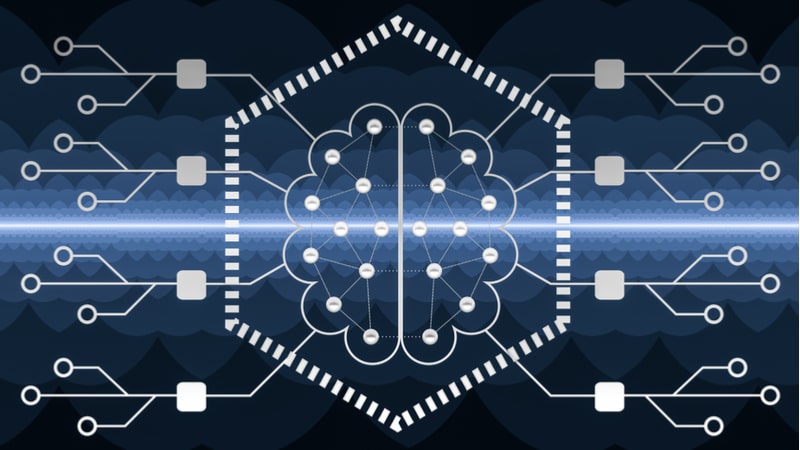
Former Deputy Secretary of Defense Robert Work wants the U.S. military to take the competitive advantage in new-age warfare by going all-in on artificial intelligence (AI) initiatives. The new military revolution, according to Work, is algorithmic warfare and the U.S. is already falling behind countries that have bought in to AI from the top down.
At AFCEA DC’s Artificial Intelligence and Machine Learning Summit today, Work spoke at length about advancement in machine intelligence that has grown rapidly over the years and has defense officials thinking about the capabilities of AI in combat zones. Advancement in machine intelligence has grown rapidly over the years and implementation of AI has grown across a few crucial areas including machine learning, human-machine collaboration, assisted operations, and human-machine combat teams.
Work described machine learning by laying out the three AI waves of DARPA, with the third wave still yet to be implemented. The first wave required very complex computer programs and were difficult to develop, while the second wave of machine learning required a large collection of algorithms and specialized hardware and has helped with the advancements we see in human-machine collaboration, assisted operations, and human-machine combat teams. The third wave, Work hoped, will involve sensor grids and sustainment and regeneration grids to be integrated.
Human-machine collaboration as a part of AI integration has allowed for the exploitation of quicker advancements through AI. For military use, the AI portion of the collaboration picks up the slack where no human—in this case a combat commander—would be able to decipher and make sense of incoming data in real-time. The human portion of this collaboration in turn can learn techniques from the AI that they’re using during combat training.
As for assisted operations, this is considered a close relative of human-machine collaboration. This focuses on the human counterpart being assisted with tasks through interaction with the AI. This can be through voice-activation or touchless user interfaces that will allow the command of a computer system through gestures and motions with physically touching a keyboard or mouse. Work said to think Iron Man and his computer system J.A.R.V.I.S., which is fictional now, but also aspirational. No word if Tony Stark has any defense contracts pending. The key for assisted operations is to reduce the task-load for humans in combat without fully taking over. Programs that can help humans become less overwhelmed in combat zones and make smarter decisions means an increase in safety.
Eventually, a human-machine combat team would be the goal in reducing human error, injury, death, and human-to-human combat, in general. Unlike assisted operations, this would be AI fully taking over in combat. This requires the implementation of unmanned, autonomous, weapons machines with humans behind them to provide support (Also, to prevent Skynet from taking over the autonomous systems). The U.S. isn’t quite to the point of fully autonomous AI and Work says that the U.S. needs more of a strong effort for consistency in AI if it wants to reach full autonomy one day.
“We don’t need big plays, we need a lot of plays,” Work said, referring to an all-of-government approach to AI in the military and across agencies. He said that the winner of the competition for AI dominance will likely go to the nation that implements AI the most effectively, not necessarily with the most overall programs.
